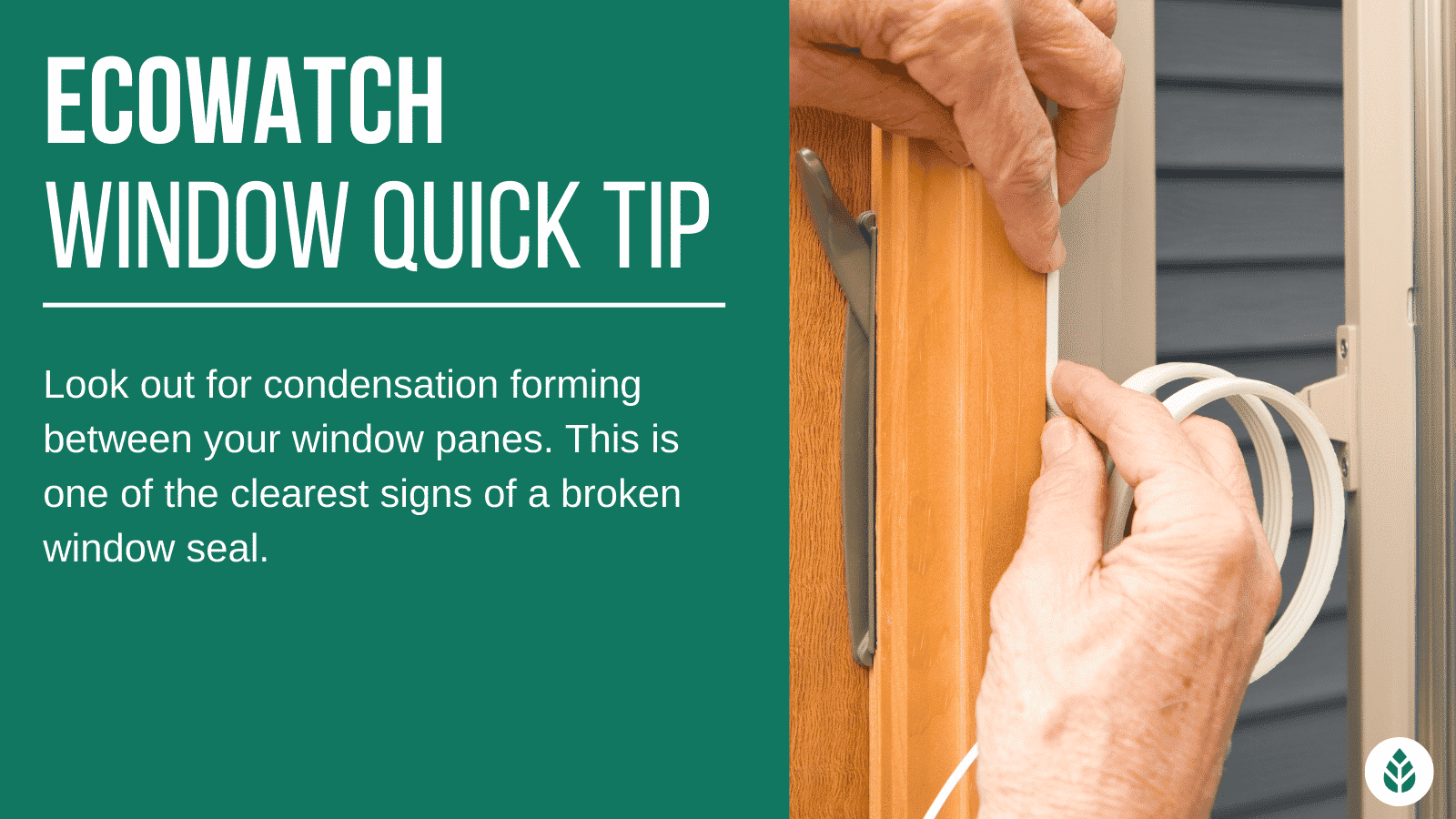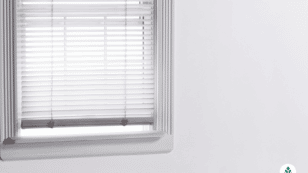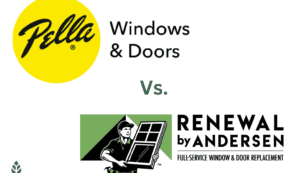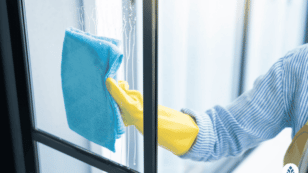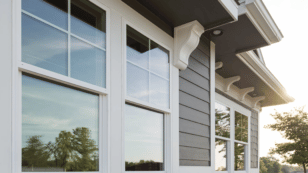
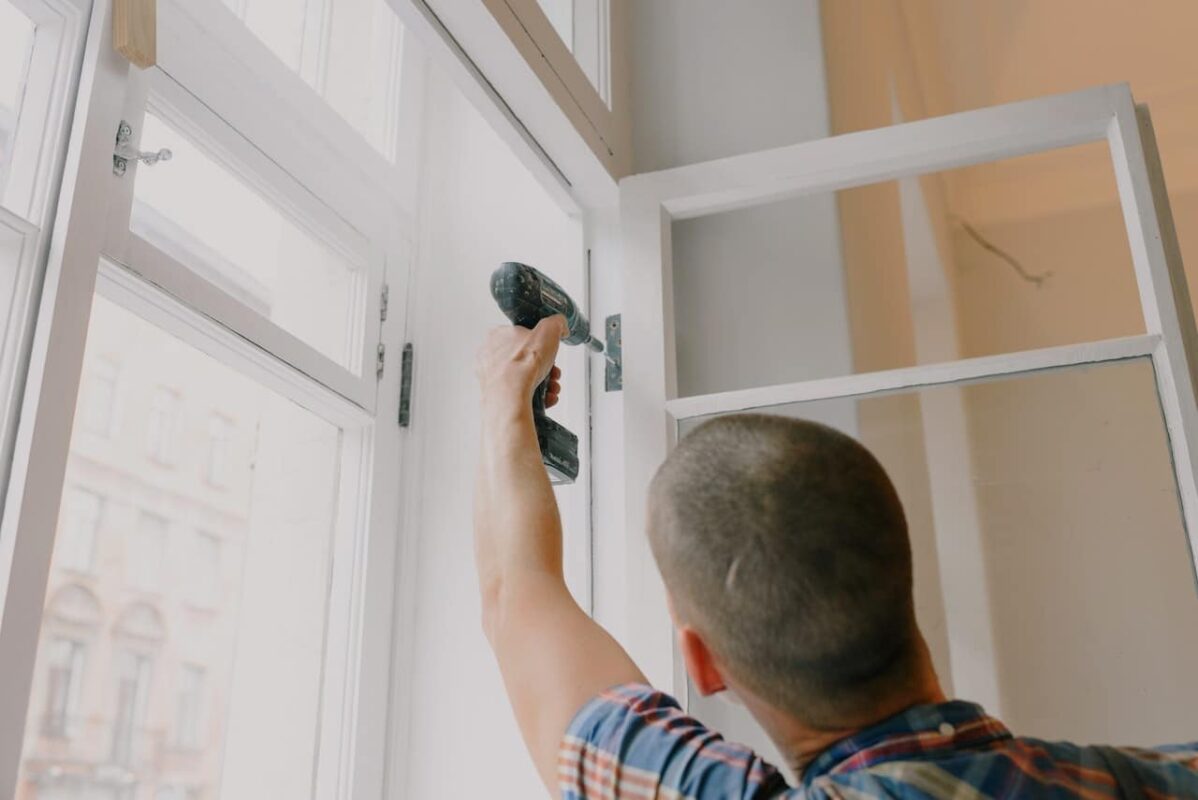
Window Seal Repair: Identifying & Fixing Broken Window Seals (2024 Guide)
In this guide on window seal repair, you’ll learn:
- What are window seals, and how do you repair them?
- Are broken window seals a severe problem?
- How do you tell if your window seal is broken?
- Can you repair a broken window seal yourself?
This guide has helped many homeowners learn more about window seals and what to do once they determine a window seal is broken. Enter your zip code below to receive a personalized quote on various window repair and replacement options near you.
Each product and or company featured here has been independently selected by the writer. You can learn more about our review methodology here. If you make a purchase using the links included, we may earn commission.
Why Are My Windows Foggy?
If you’re trying to look out your window and your view is blocked by fog, you probably have a broken window seal. A foggy window is the most common sign that your window seal is broken. Broken seals allow humid air to get trapped in between your window panes, creating the condensation on the inside of your window that clouds your view.
While a fogged window is frustrating to look at, a failed seal it also creates a bigger problem of decreasing your home’s energy efficiency, therefore increasing your energy bills.
If you think the seal around one of your window panes might be broken, you’re probably wondering how to confirm that it is and, more importantly, how to go about fixing it. In this guide, we’ll discuss what exactly a window seal is, how to identify if one in your home is broken, the average cost of professional window seal repair and more.

Renewal by Andersen

Save $375 Off Each Window
Average cost
Pros
- Great industry reputation
- Award-winning company
- Member of US Green Building Council
- Manufactures products in-house
Cons
- No lifetime warranty
- More expensive than competition

Window World

200 Locations Nationwide
Average cost
Pros
- EnergyStar Partner
- Large service area
- Wide variety of products and services
- Great industry reputation
- Lifetime warranty
Cons
- Quality of service will depend on your area

Window Nation

9 States (75 miles from showrooms)
Average cost
Pros
- Award-winning company
- Wide variety of products and services
- Manufactures products in-house
- Custom Designs
Cons
- Installation not covered by warranty
- Limited service area
Window Seals: What Are They and How Do You Repair Them?
A window seal is a seal around your glass panes that prevents air and water from seeping through your windows. When window seals break, they leave you with foggy windows or glass distortion.
Most modern windows are double-pane, triple or multi-pane windows (all of which are called thermopane windows). This means there are multiple panes of glass with a sealed void between them that is filled with gas. A window seal is created around each pane of the entire insulated window with a rubber sealant that’s usually made from silicone or polyurethane.
Choosing windows that have a Green Seal™ certification will ensure that your windows meet strict efficiency standards and use environmentally friendly materials. There are also some non-toxic weatherstripping options that can help prevent air leaks, like foam tape, felt, or V strip (also called v-channel or tension seal).
If at any point the seal around the pane cracks or is damaged, the gas trapped between the panes escapes, and you’re left with a broken window seal. When this happens, double- or triple-pane windows lose much of their insulating qualities, and the heat transfer between your living space and the outside becomes more rapid. This often leaves your window with a foggy or distorted look.
Foggy window repair involves removing the pane with the damage, cleaning the area, reinstalling the pane, filling the void once again with gas, and then resealing around the pane.
If you have an older home with single-pane windows and your window seal breaks, you may want to look into replacement windows to increase your energy efficiency.
Why Do Window Seals Break?
The sealant around your window panes is usually either silicone or polyurethane, which can stretch and shrink to some degree with changes in temperature and humidity. During the day, when your windows are in direct sunlight, the glass expands slightly, only to shrink when the temperature dips at night.
Window sealant is meant to stand up to frequent use and on average lasts 10 to 15 years. However, the constant cycle of expanding and contracting will eventually cause the seal to crack, dry out and lose elasticity, especially if you live in an area that sees a wide range of temperatures throughout the year.
While this is an issue across the board, investing in high-quality windows will lessen your chance of having to call the handyman for window seal breaks, defogging and other window repair issues. We recommend installing Energy Star-certified, energy-efficient windows that have an average lifespan of 20 years.
Are Broken Window Seals a Problem?
Broken window seals are an issue, but they aren’t an emergency like a broken window pane. Still, if you recognize that your window seal is broken, it’s best to get a remedy in place right away.
The seal around your double-pane and triple-pane windows are a big part of what determines your window’s energy efficiency. If the seal breaks, the outside air can enter the space where the insulative gas used to be, and you’re left with what is essentially a single-pane window. Your window loses much of its insulative value, meaning your energy bills will likely increase a bit, your heating and cooling system will work harder and be at greater risk of issues, and your living space could become less comfortable.
Multiple-pane windows also prevent condensation from forming on your window glass, so a broken seal can leave condensation between the panes. Not only is this frustrating because it blocks your view through the window, but it can also increase the likelihood of condensation on the inside of your window. If the condensation accumulates enough, it can drip onto your window frame or flooring, potentially causing water damage.
How Window Seals Contribute to an Environmentally Sustainable Home
If windows are not properly installed or sealed, you’ll notice the difference in increased energy bills straight away. But more than that, it will make you a less sustainable homeowner.
A broken window seal leaves room for air leaks, sending all of your heating and air conditioning straight out the window (literally). As a result, your HVAC system will have to use a lot more energy to try to regulate your home’s temperature.
The average homeowner’s energy use accounts for about 6,400 lbs of carbon dioxide (CO2) per year when heating a home, and an extra 4,700 lbs of CO2 from electricity used to power most air cooling systems. That means something as small as a broken window seal causing an HVAC system to work harder can account for thousands of lbs of CO2 emissions in a year.
According to Energy Star, the average homeowner saves between $100 and $500 dollars and reduces their CO2 emissions by 1,000 lbs per year by replacing their single-pane windows with Energy Star-certified ones. Double-pane, clear glass replacement windows can save between $27 and $197 and 246–2,000 pounds of CO2.
Aside from repairing broken window seals and upgrading to energy-efficient windows, there are a few other things you can do to ensure your windows are performing as best as possible for your home and the environment:
-
- Choose sustainable window frames: Vinyl window frames are a popular option, and while they’re not always created in a sustainable fashion, they’re great for improving home insulation and energy efficiency.
- Apply caulk or weatherstrips: Caulk can be added as an extra window sealant. Weatherstripping is typically added to the top of the window’s upper and lower sash. An even more eco-friendly option would be to use a draft stopper, which can be made from upcycling household items.
- Glazing and coating: A lot of Energy Star windows will come with a low-E glass coating, but you can talk to your window installer about additional glazing and coating options to boost energy efficiency.
- Paint your window frames a light color: A white or light-colored paint on your window frames will better reflect the sun’s rays, keeping your home cooler.
How Do You Tell If a Window Seal is Broken?
Identifying a broken window seal is something every homeowner should be able to do, but few know how. There are three things to look out for:
- Condensation between your window panes
- A foggy window,
- A window that feels hot or cold to the touch
- A distorted view through the window.
When the seal around the pane is compromised, moisture will enter the void and build up between areas of disparate temperatures — in this case, the inside of your home and the outside air.
If you see condensation on your windows that you can’t wipe off from inside or outside, the chances are good that your window seal is broken.
Another thing to look for is unusually hot or cold glass inside your home. When your window seal is broken, your inner pane will be the only line of defense against outdoor temperatures. As such, the glass will feel hotter than normal in the summer and colder than normal in the winter.
Finally, your glass panes can bow slightly once the seal is broken and the vacuum-sealed gas is released. If this happens, you might notice that the view through your window is a bit distorted. Distortion can occur even if you don’t notice the other two symptoms.
Can Broken Window Seals Be Repaired?
Yes, absolutely. Just like window seals can be created during the manufacturing process, they can also be repaired once they are broken. The process is relatively straightforward when done by a professional.
If you hire a window repair company, the technician will remove the damaged pane, reintroduce argon gas or krypton gas into the void between the panes and recreate the seal around the window panes. The work might also involve reassembling the window frame if it was taken apart for the seal repair.
If you hire a window repair company, the technician will remove the damaged pane, reintroduce argon gas or krypton gas into the void between the panes and recreate the seal around the window panes.
Don’t let the idea of these gasses scare you. Both argon and krypton are types of inert gas. They’re non-toxic, clear, odorless and perfectly safe.
Argon gas is used more commonly in windows because it’s a bit cheaper and performs well in a half-inch space. Krypton can be used if the spaces between your window panes are thinner (about a quarter inch). Krypton gas also has a better thermal performance compared to argon, which also makes it a bit more costly.
Just a heads up: when repairing a window seal, you (or your window installer) may have to reassemble your window frame or re-fit your window.
How much Does a Window Seal Repair Cost?
On average, hiring a professional window repair company to fix a broken window seal will cost around $140. Most homeowners pay between $100 and $200 for this service, depending on the size of the pane, the location of the window, and the type of window you need to be repaired.
However, a premature seal failure is often covered under a warranty. If you’re experiencing a broken seal on a new window, the repair might not cost you anything.
Fixing Broken Window Seals: Repair or Replace?
If you have a broken window seal and you’ll be paying an average of $140 to repair it, you might be wondering if it’s worth it just to replace the entire window. There are a few things to consider before you decide.
First, the average cost of replacing a double-pane window is around $450, while the typical cost of repairing a broken window seal is much cheaper at around $140. However, if your window is older anyway — approaching or above 20 years old — then window replacement probably makes more sense. Windows gradually degrade and become less energy-efficient over time, so you’re better off replacing old windows than sinking money into repairs for them.
You should also consider the overall quality of your window. If your window has an aluminum frame that isn’t particularly energy-efficient, you might consider replacing the window with one that has more insulative frame material. Some more-efficient options include composite, vinyl and fiberglass windows.
If your window isn’t particularly old and is already equipped with high-quality frame material, repairing the broken window seal is a more cost-effective option.
Window Seal Repairs with an AC Window Unit
If you have an AC window unit, you may need to take extra measures to properly seal your window.
After placing your AC unit in the window, you can use an eco-friendly weatherstripping option, like foam tape, felt, or V strips to fill any gaps. Caulking works well for smaller areas and can also be easily removed if you decide to remove the AC units in the winter.
It’s important to completely seal any openings in order to increase the energy efficiency of your home. Your AC unit will have to work extra hard to cool your room if it’s fighting the hot air that’s creeping in from the outside.
DIY vs. Hiring a Professional for Broken Window Seal Repair
Although the cost of having a professional repair your broken window seal isn’t that high, many homeowners wonder if a DIY window seal repair is possible.Unfortunately, it’s not practical to reseal your own window panes, as the job requires special equipment and insulative gas. If you’re looking strictly for a window seal repair, you should hire a professional to do the work for you.
Installing Insulated Glass Units (IGU) at Home
An insulated glass unit (IGU) refers to any window that has more than one pane, such as double-pane, triple-pane or multipane windows.While we recommend hiring a professional, it is possible to replace window panes with broken seals yourself. You can purchase new IGUs from window manufacturers, and you can install them yourself by disassembling your window’s body panel, removing the old glass, inserting the new IGU and reassembling the body panel. In most cases, the money you’ll save on labor costs by doing a DIY window repair is not worth the time it will take and the risk of making a mistake.
With that being said, it is possible to replace window panes with broken seals yourself. You can purchase new insulated glass units (IGUs) from window manufacturers, and you can install them yourself by disassembling your window’s body panel, removing the old glass, inserting the new IGU, and reassembling the body panel. Here’s a quick overview:
In most cases, the money you’ll save on labor costs by doing a DIY window repair is not worth the time it will take and the risk of making a mistake. As such, we recommend hiring a professional window repair technician if you need to repair a broken window seal.
DIY Window Glaze
Adding a window glaze can also help to keep your home safe and energy-efficient. While it’s possible to DIY a window glaze, it will involve removing your window from the sash, removing any old or damaged glaze, reinstalling the glass and applying window putty.
You can save some money by doing this project yourself, but if you’re not sure exactly how to seal or glaze your window, you can create bigger problems than what you started with. Windows are your first line of defense against the elements, so you want to be careful with DIY window projects.
As such, we recommend hiring a professional window repair technician or a trusted local handyman if you need to repair a broken window seal or apply window glaze.
5 Ways to Prevent Window Seals From Breaking
Broken window seals can be a nuisance and it’s likely not the home improvement project at the top of your list. However, broken window seals cost you a significant amount of money in repairs and energy costs if the problem is recurring.
Luckily, there are a few things you can do to prevent your window seals from breaking. Keep in mind, though, that window seals will eventually break in any case, so the tips below are just to make the issue pops up less frequently.
- Have a professional install your windows: Even slight issues with window installation can leave your window at risk of bending, warping and bowing, and all of these actions can put added pressure on the window seal.
- Avoid power washing your windows: Windows need cleaning occasionally, but using a power washer with high pressure can damage the window seals around your glass panes.
- Don’t use heat guns to remove paint from window frames: While this will make removing paint a quick process, the heat can cause the window sealant to expand, putting it at risk of cracking when it cools.
- Check the seals around your windows often: At the very least, inspect your window seals annually and make minor repairs to the sealant as needed to prevent major damage. Repairing slight cracks or signs of tearing early can prevent the seal from breaking entirely, which means you’ll save money on the repair and also maintain better home energy efficiency year-round.
- Add caulk and weatherstrips: You can calculate how much material you’ll need for weatherstripping by adding the perimeters of all windows, plus 5% to 10% to accommodate for waste or human error. There are over a dozen different types of weatherstripping materials, but foam tape, felt and V strips are typically the most sustainable options.
- According to the U.S. Department of Energy, weatherstripping and caulking your windows to prevent air leaks can lead to a 10 to 20% reduction in your heating or cooling bills.1
Financing Your Window Repair Services
A window repair or replacement is a necessary but costly expense that not everyone can afford to pay upfront. If you’re worried about how to pay for your window repair or replacement project, know that you have some options.
All of the top window installation companies offer financing options for window replacement, either in-house or through a trusted bank. That may include a $0-loan, monthly payment options with 0% APR plans or 6 to 144-month pay-back periods.
How Can I Save Money on Window Repair Services?
There are a few things you can do to save money on a broken window seal repair or other window repairs.
Take Advantage of Your Warranty
Almost all window installations come with a warranty, typically ranging between 5 and 15 years, but it may be longer for higher-quality windows. If your window isn’t performing well within your warranty time frame, you can usually have a window professional come fix the issue at no cost to you.
Repair Multiple Windows At Once
You can save some money by carrying out multiple window repairs at once. Again, this will cost more upfront in absolute terms, but having repairs done on a number of windows will decrease the relative per-window cost of the repairs.
DIY Window Repair
If you’re a handy homeowner, you can attempt to DIY repair your broken window seal to save an average of $30 to $40 on labor costs. However, you’ll be responsible for all of the material costs and the risk of not sealing the window properly, which can lead to rising energy bills.
Replace Your Old Windows
If your windows are having issues and they’re more than 15 years old, it may be time to replace them — especially if you still have single-pane windows.
Yes, this will be a much bigger investment, but new windows will save you money in the long run. CNBC reported that a $10,000 vinyl window replacement project could yield a return on investment of $8,500 — that’s an ROI of 85%.2
Additionally, Energy Star predicts the upgrade will save you between $101 and $583 a year when replacing single-pane windows and between $27 and $197 a year when replacing double-pane or clear-glass windows.3
FAQ: Window Seal Repair
Yes, it is possible for a professional to repair a window seal, but the work is too advanced for a DIYer and requires special tools. A window repair professional can remove the damaged window glass, add insulative argon or krypton gas between the panes and reseal around the exterior before reinstalling the window.
If you experience a window seal failure, there are several benefits to resealing it. The most significant upside is that you’ll restore your window’s energy efficiency, which means you’ll reduce your energy bills. You’ll also make your living area more comfortable, reduce the strain you place on your heating and cooling systems and prevent condensation from creating foggy windows.
Window seals are made of silicone or polyurethane caulk. These materials are somewhat elastic, but as they expand and contract with changes in outdoor temperature and humidity, they will eventually fail and need to be replaced.
The average cost to repair a broken window seal is around $140. A normal price range for the work is anywhere from $100 up to around $200.

 233k
233k  41k
41k  Subscribe
Subscribe 
